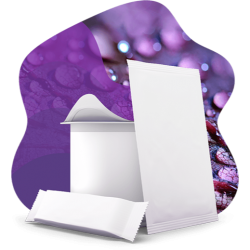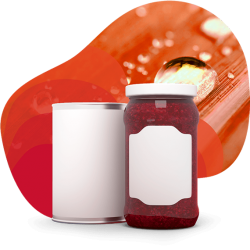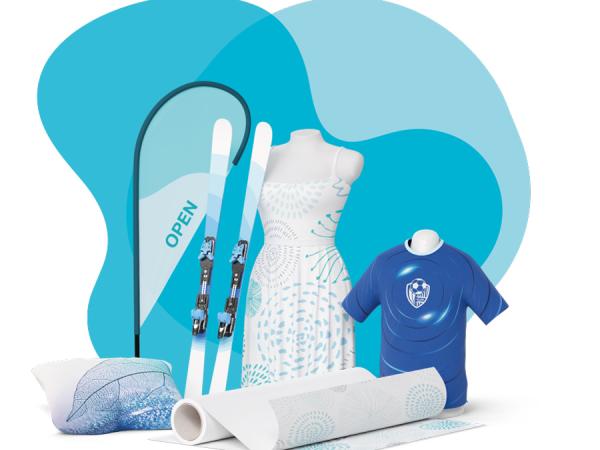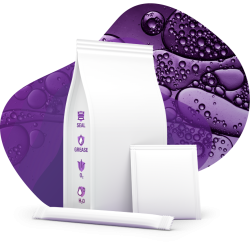
Packaging that communicates with the consumer

Interactive features upgrade sales packaging and increase purchasing incentive.
Everybody is talking about the Internet of Things, or IoT – a network that interconnects physical and virtual objects, enabling them to work together on the basis of digital technologies. The paperboard, too, will be part of the IoT in the future. This presents the opportunity to upgrade paperboard based packaging with digital functions and offer the consumer an even more intensive brand experience. Especially when the packaging is produced from a premium paperboard such as Sappi's Algro Design. The magic word for this trend: "interactive packaging".
The classic – QR codes
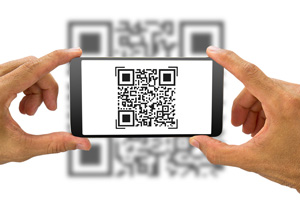
Already, packaging paperboard is often furnished with interactive functions. For years now, brand manufacturers have been printing QR codes on their product packaging. Very few vendors, unfortunately, offer significant added value in the product websites that these codes direct the customer too, however, QR codes hold great potential for promotional campaigns. If the packaging communicates that the QR code leads to a prize game, for example, the consumer will not only reach for their smartphone more often, but also for the product. Yet QR codes can also pose a barrier to consumer use, as the consumer must first install a special decoding app on their smartphone.
NFC on the heels of RFID
NFC chips are becoming ever more popular in the development of packaging, as they allow communication between packaging and mobile terminals without a decoding app. NFC – near field communication – is a further development of RFID technology but, unlike RFID, doesn't rely on industrial scanning devices. Rather, it can communicate with almost any smartphone; the easy-to-use technology is already familiar to many customers, who use it for cashless payment.
Complete freedom in paperboard design

In combination with high-quality paperboard, NFC chips offer many attractive brand experience possibilities. For example, prize games or application tips can be transmitted directly to the smartphone display. But NFC chips are also used as a form of trademark protection: the end customer can easily verify the origin of the product without having to closely examine the content of the package. With regard to design as well, NFC chips offer advantages over QR codes: the chip can be invisibly integrated in the paperboard and thus doesn't need to be printed onto the paperboard surface. Using the chips, retailers can determine, in real time, the place and time of purchase, along with further key indicators of user behavior, thereby gaining more precise control of merchandise management. Experts predict that NFC chips will soon be printed directly and invisibly on the surface of packaging with electronic ink.
More attention with augmented reality
The much-discussed augmented reality (AR) also offers interesting prospects for digital interaction with high-quality paperboard based packaging. By means of an AR marker affixed to the packaging and a smartphone app, numerous additional sensory experiences can be conveyed – such as images and videos. These visual enhancements allow not only an increase in the consumer's attention (e.g. through a three-dimensional presentation of the product on his their smartphone), but also a deepening of his their understanding of the product (e.g. through short sequences with application examples). AR is also beneficial in the case of products requiring explanation, such as medicines: for example, a virtual pharmacist could be called up via augmented reality to explain dosages and give instructions for use.
Future visions for paperboard packaging
While augmented reality is among the most important future topics in the packaging industry, some visionaries are already thinking beyond it. What would it be like, for example, to bypass the smartphone AR app and instead furnish the packaging directly with animated pictures and sounds? This would allow consumer attention to be directed even more strongly to the point of sale device and the product packaging. Initial test patterns of paperboard with display and sound modules have already been produced. It will no doubt take some time, however, before such packaging is to be found en masse on the store shelves.
LEDs are lighting up packaging
Already present in the consumers current reality, however, is packaging using OLED technology. In 2012, a well-known spirits producer put this fascinating packaging on the market. OLEDs (organic light-emitting diodes) are light sources mere nanometers in thickness and made of organic semiconductors that can be printed onto the packaging complete with all electronic components, including batteries. Thanks to proximity sensors which are likewise integrated, the packaging begins to blink and glow just as the customer approaches the point of sale device.
The bottom line: Interactive packaging opens up fascinating future options for the paperboard world. To ensure that trends like augmented reality and OLEDs develop beyond the realm of curious novelties, it is important that these technologies be coherently integrated in a well-conceived paperboard based packaging design concept. And the role of a truly premium substrate – for example Algro Design from Sappi – should not be underestimated here.
